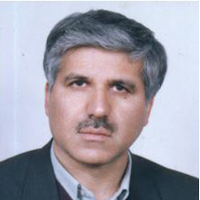Forage quality of range species in semi-steppe rangelands of Karsank, Chaharmahal-o-Bakhtiari
Author(s):
Abstract:
Being informed about the sufficiency of forage required for the daily need of the animal unit grazing on the rangeland is of paramount importance in animal and rangeland management. Therefore, in the current study, 32 important plant species grazed by animals on semi steppe rangelands of Karsank in Chaharmahal-o-Bakhtiari were sampled during three growth stages (vegetative growth, flowering and seeding). During each stage, three samples were taken and three plant bases were cut for each sample. Having measured the percentage of nitrogen (N) and acid detergent fiber (ADF) of the studied species, the amount of their crude protein (CP), dry matter digestibility (DMD) and metabolisable energy (ME) were determined to know their critical level for meeting animals’ daily requirements. In order to analyze the data, analysis of variance (ANOVA) was used and to observe the within-groups differences Duncan's test was employed. Results showed that the maximum crude protein (23.87%), dry matter digestibility (74.35%) and metabolisable energy (6.73 Mj/Kg/DM) belonged to Bellevalia glauca. The minimum crude protein (9.81%) belonged to Thymus daenensis and the minimum dry matter digestibility (51.38%) and metabolisable energy (6.73 Mj/Kg/DM) were recorded for Asperula molluginoides. The average crude protein for vegetative, flowering and seeding stages were 20.92, 13.03 and 8.89%, respectively, that at all three growth stages, it was higher than its critical level (7.0%) to meet the daily maintenance requirement of an animal unit. Average dry matter digestibility values for the three phenological stages were 62.48, 55.02 and 46.18%, respectively, that its amount was higher than the critical level (50%) for vegetative and flowering stages and was lower than the critical amount at the seeding stage for meeting the daily maintenance requirements of an animal unit. Metabolisable energy in vegetative, flowering and seeding stages were 8.62, 7.35 and 5.85%, respectively, which were higher than the critical level (8Mj) during the vegetative growth and flowering stages and lower than the same critical level at the seeding stage for meeting the daily maintenance requirements of an animal unit. This is an indicator of the fact that desirability of range forage at different grazing times is not the same and it is necessary to determine the daily requirement of animal unit on the basis of forage quality. In general, the studied rangelands are considered to be desirable in terms of supplying required daily crude protein and metabolisable energy for an animal unit. Results presented in this paper are important for livestock and range management in the studied area.
Keywords:
Language:
Persian
Published:
Iranian Journal of Range and Desert Research, Volume:21 Issue: 2, 2014
Pages:
221 to 233
magiran.com/p1373324
دانلود و مطالعه متن این مقاله با یکی از روشهای زیر امکان پذیر است:
اشتراک شخصی
با عضویت و پرداخت آنلاین حق اشتراک یکساله به مبلغ 1,390,000ريال میتوانید 70 عنوان مطلب دانلود کنید!
اشتراک سازمانی
به کتابخانه دانشگاه یا محل کار خود پیشنهاد کنید تا اشتراک سازمانی این پایگاه را برای دسترسی نامحدود همه کاربران به متن مطالب تهیه نمایند!
توجه!
- حق عضویت دریافتی صرف حمایت از نشریات عضو و نگهداری، تکمیل و توسعه مگیران میشود.
- پرداخت حق اشتراک و دانلود مقالات اجازه بازنشر آن در سایر رسانههای چاپی و دیجیتال را به کاربر نمیدهد.
دسترسی سراسری کاربران دانشگاه پیام نور!
اعضای هیئت علمی و دانشجویان دانشگاه پیام نور در سراسر کشور، در صورت ثبت نام با ایمیل دانشگاهی، تا پایان فروردین ماه 1403 به مقالات سایت دسترسی خواهند داشت!
In order to view content subscription is required
Personal subscription
Subscribe magiran.com for 70 € euros via PayPal and download 70 articles during a year.
Organization subscription
Please contact us to subscribe your university or library for unlimited access!



